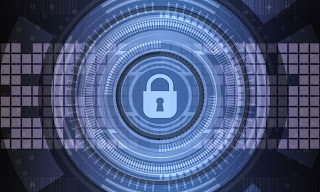Points To Consider To Improve Security Posture Of Enterprises
For
different reasons, those employed in the critical area of cybersecurity are
always stressed. The workload is immense since cybersecurity teams are
typically understaffed. The very essence of the work is highly demanding as
well. In such situations, solving the burnout problem requires companies to
work better, not harder. Here are some approaches that businesses can adopt to
take the challenges head-on.
Understanding
The Business
The
COVID-19 pandemic has shown that companies need to be able to quickly adjust
and adapt, whether in response to a crisis, customer needs, or technology. This
need for speed puts IT security at the forefront, to the point that
cybersecurity is no more a technology problem; it's a business issue.
Organizations
should make cybersecurity the overall business plan part of. In order to ensure
that security is integrated in organizational culture, this means inculcating a
security-first mindset.
Recognizing
The Complexity
COVID-19
has established fresh, intimidating factors that contribute to increasing the
degree of uncertainty for businesses to tackle. This increased volatility has
also influenced cybersecurity, leading organizations to closely watch the
following business developments:
·
Disparity in cybersecurity expertise
·
Accelerated digital and cloud transformation
·
Increased cybercrime and attacks
· A
diverse regulatory environment with different geography-based protocols for
data handling
The
need for organizations to deal with these trends, and the associated confusion
they bring, cause many to realize that dealing with cybercrime is not the core
competence of their company. Even if it is not their primary sector, it is
still too difficult to handle. The overarching goal of companies should be to
consider the nature of the pandemic, to innovate and invest in their core
competencies, and to ensure that they are highly protected from cyber threats
outside their control, requiring a more proactive, resilient approach to
cybersecurity.
Re-examine
Business Models
There
is a need for reassessment of market models and procedures. This analysis
should also understand how cybersecurity should be handled as the company moves
forward.
During
the reassessment, it is important to review the current cybersecurity tools.
Are they being put to good use? Do you have redundant toolkits? Do you have the
right people with the right skills to take advantage of the instruments? Will managed
security facilities alleviate the pressure of the current team?
It is
important to deeply evaluate an enterprise's cybersecurity toolbox for a few
basics, such as continuous monitoring and up-to-date threat information for
proactive responses. If it doesn't have these variables, it is time for a move.
Automation
The
ray of hope for most security departments is the fact that there has been
considerable advancement in cybersecurity technology in the last few years.
Nevertheless, many businesses have not fully committed themselves to the use of
automation in cybersecurity as a way to achieve scale.
It
will be difficult for cybersecurity organizations that rely on manual changes
and procedures to keep up. Cybersecurity needs to be dynamic and automated on a
wide scale in order to reach the scope and speeds of modern network
architectures.
Knowing
The Opponent
The
opponent of today is determined and knows the course of least resistance. If
businesses pursue the strategy of protecting digital assets only during
business hours, adversaries can quickly discover this.
Today's
organization is global, which means there is no downtime for business or
adversaries. Cybersecurity is needed round the clock, regardless of the
geographic location or time zone of the organization. Knowing this
round-the-clock attitude will help to distribute the required resources at the
right time to enhance security across the enterprise.




Comments
Post a Comment